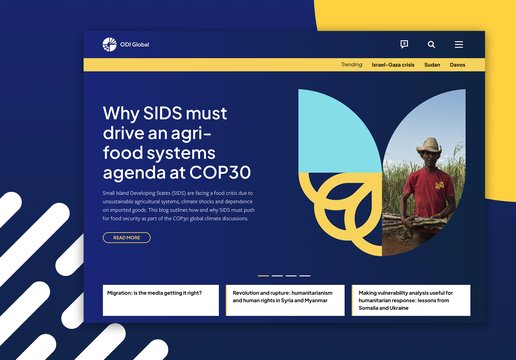Site search is an unsung hero. Often neglected, it’s actually a star player in creating a smooth user journey and happier, more engaged users. And it doesn’t have to be a frustrating, blunt instrument. Read on to discover how to give your search function a lot more love.
Why should I care about search?
Frustrated that your users are failing to feast on the delicious, nutritious content you’re serving up on your site? Just imagine how they’re feeling.
Search can often be an afterthought. Sure, Google does it really well. But you don’t want to rely on Google to send your users to content deep in your website, because … well … we all know about Google and its shifting alternative agenda.
Making sure you’re king of your own castle – providing great search within your site – simply takes a fresh mindset.
All searches are not equal
Every website is different. Your website is different. That’s why off-the-shelf search rarely cuts the mustard – something we’ve all experienced as users, vainly sifting through a load of irrelevant search returns.
In theory, good search is simple: type in a few keywords and you get a handful of the most relevant pages, complete with clear title and summary.
But what happens when the keywords aren’t specific enough? Or the site is packed with similar content? Or terminology and search terms might vary? Who has the time to click through 60 pages of search returns?
Step forward, filters. Most websites structure and group content in sensible ways that will naturally translate into filter options. This could be content type – an article, podcast, event or service, etc. Or perhaps theme, department or audience type. Sometimes author. Sometimes location. Or we might infer other ways of grouping content, for example by the year of publishing.
At Cursive, we’ve developed a toolkit to tailor the search experience to specific needs, from basic to increasingly complex, depending on your content.
Level one of this covers basic rules of thumb. For example, it’s better to:
- Narrow, don’t expand – the goal is to return pages that match keywords AND other criteria so the matches are refined down with every click.
- Reduce dead clicks – only let the user pick filter options that deliver results. Otherwise, what’s the point?
- Show the number – so users see many pages match the available filter options. That way they can decide whether to pick more filters.
Then, we’ll put ourselves into the shoes of our target user and consider:
- Custom sorting – sort by relevance by default, but offer a sort function in case they want to see the latest content at the top.
- Pagination – no one wants to see all the search results as a single page, it’s slow and cumbersome. Adding pagination solves this. We used to favour the ‘lazy loading’ approach for listings, but it has it's downsides in terms of SEO.
- Rich results – offer compelling reasons to click by including good information in the returns. Title and summary are minimum – extra context such as theme tags, the author’s name, publication date and the type of content (video, event, article) can also help.
- Make it snappy – we want our results to be quick and accurate, so choose the right backend for the search requirements. PostgreSQL is a great choice for most situations or Elasticsearch/AWS OpenSearch if you need more heavy lifting.
- Autocomplete – where possible, return results in real-time and load content asynchronously (with some elements loading in the background) to speed up the process.
Take control
We often hear from clients that they see search as a bit of a black box. That’s totally understandable; it sometimes seems mysterious why certain results appear at the top of a listing, while expected content is left out or lurks at the bottom of the pile.
“A black box is defined as a system that produces results without the user being able to see or understand how it works”
Search can be complex, and the algorithms that determine the relevance of results are based on many factors. These can include the frequency of keywords or phrases or the boost parameters (applying more weight to certain elements) that have been used at index time.
Sometimes the best page you can offer for a keyword isn’t the one the search engine picks. For example, maybe the algorithm wants to prioritise the technical specification page above the product landing page but that’s unlikely to be what the user wants to see.
Fortunately, there’s a solution in the shape of promoted search functionality. For any given keyword combo, you can manually pick and prioritise which pages are returned, putting you back in control. Sometimes humans know better than machines.
Gain insights
As well as the benefits for users, putting search front and centre– both physically on the website and in terms of your own priorities – means users and traffic will be directed through it. This means we can get insights into how people use the website, what sort of content they’re looking for and what the popular search terms are.
Knowing these favourite terms means you can track them over time, report on them and spot trends. Plus, you can feed them back into the website as suggested search terms, to help others find popular content.
Global ‘vs’ local
As well as site-wide search – returning content from all sections of a website across all the different content types – more localised search can be useful too.
A dedicated search function that focuses exclusively on one section generally follows the same rules as its site-wide big sister, but because it’s specific to a subset of content types, it may need bespoke categorisation, filtering and sorting methodologies.
For example, when we’ve built sites that include a publications library, with both internal and external articles, we’ve sometimes created a specific publications search function, searchable across title and abstract, alphabetically, and by date and relevance.
The details will depend on your unique content, but if your website is home to large datasets, it’s worth considering adding search at section level.
Conclusion
If your website is bursting with useful pages and content, great search is essential. And that takes thought. But taking time to consider the type and amount of content you have, as well as how users might think about searching for it, is well worth it.
Not only are your users happier and more likely to return, you can use those juicy analytics to glean valuable insights into what really matters to them.
So, whether you’re starting from scratch or upgrading, a solid search feature should be the beating heart of your navigation and user journeys.


